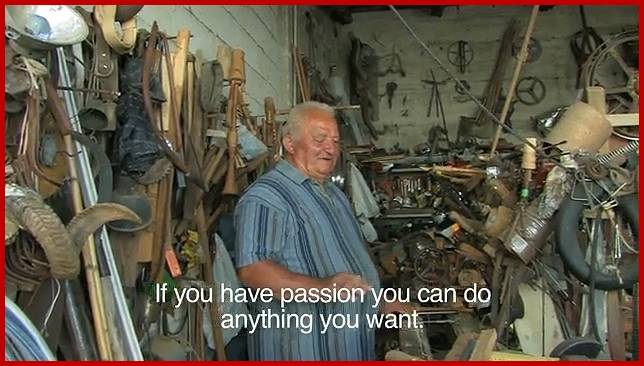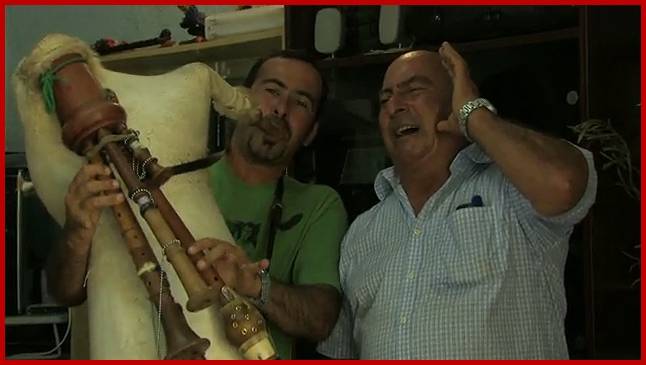Zampogna: the Soul of Southern Italy
For most Italian-American immigrants, traveling back to their homeland (or their parents’ or grandparents’ one ) is often a journey of self-discovery.
It might sound “cheesy”, but even if one visits the monuments in Rome for just a few weeks, or does the most “impersonal” and typical tour of the country, the personal connection, the memory imagined or lived, retold generation after generation, the expectations, the cultural transitions, all enhance the trip and make it more meaningful.
Italy has evolved a lot from the historical conditions and mentality that existed when most immigrants left for the States almost a century ago: nowadays things are often very different from what Italian-Americans expect Italian culture to be, especially in the urban areas where things are closer to the high life quality of a city like New York combined with the Italian way of life and the awe-inspiring “open air museum” made up of culture, history and Art that go hand in hand with modernity, without annihilating each other. Italy is a massive contradiction: there are things that haven’t changed at all, and others that have shifted, improved and created a new and more complex culture just as exciting as the traditional one.
David Marker is after the first kind of experience, the “untouched reality”, the traditional one (at least for certain regions). He travels back to Italy to explore his passion for a very ancient instrument, the zampogna (a kind of bagpipe), an instrument that even most Italians are not familiar with. David has played it since he was young and takes this journey very seriously, as an opportunity to visit his somewhat close family (older cousins and other distant relatives in Sicily) and to buy new instruments or play with musical experts ultimately leading him to a festival entirely dedicated to this instrument.
David Marker decided to direct his own documentary about this journey, filming it and capturing the memories.
He declares that for him “Italian music is Italy” and this is a testament of how it is often pop culture, of every kind, that digs deepest into a country and connects people instantly.
In the documentary he shows us his arrival at his family house in Sicily, a few family moments and the instrument itself, in the hands of old men, in his hands, in old workshops. The zampogna is made of animal skin, goat usually, and every time we hear it played in the documentary the music is beautifully edited with surrounding sounds, the bells, the steps, the voices…
We follow David as he tells us how his great grandfather immigrated to the United States, but while connecting with his distant cousins, over this particular passion and about this trip, he says: “After this trip, I feel like I actually knew him”.
He describes Sicily as a land he is completely immersed in and not just visiting, like a tourist, where family is the glue of society. “The more I understand about this culture the more I understand about myself”
We see different kinds of approaches to how you build a zampogna. David meets with a carpenter/carver that doesn’t use a lathe but advocates artisan’s handmade work. All zampogne are generally mostly handmade anyway and therefore each instrument is unique.
A very interesting moment in the documentary occures in Sicily, when David asks some young teenagers to sing him a song and they kind of goof around. Soon after he meets a small group of old men (one of them is the one who makes zampogne) in a park and they improvise for him a sort of poetic jam session, following an ancient rhyming tradition, with articulate, polished, complex words and a back and forth between the verses, sometimes singing in duet. David also comments on how, through this poetry, they seem to be engaged in a Socratic dialogue, discussing love, music but also political and historical issues.
For a second one can glimpse the history of poetic tradition and music in Sicily, which in the Middle Ages (13th century), when the Scuola Siciliana was born (poets that were admired by their Tuscan followers, such as Dante) put music and poetry on the same level, as the same form of art. This is a quick way of contextualizing something as specific and simple as the zampogna in a deep cultural phenomenon, an oral tradition that has been kept alive for generations.
David Marker uses this contrast between the teenagers and the old men to emphasize the message of his documentary, the risk of losing a tradition, although one could argue that nothing is ever completely lost and what seems like a deeper culture, just because it is old, could just reappear in other forms and be channeled in other ways.
It is true, though, that the zampogna itself is sort of risking extinction and only those who are really passionate about it buy, build or play this instrument.
The documentary follows the director’s journey also to Calabria where he stays with a family who play all together (including the kids) in beautiful improvised jam sessions.
He then goes to San Gregorio Magno near the Appennines (where the other side of his family lives) and shows us, through another man who makes these instruments, the pastoral connection. He follows this shepherd capturing yet another disappearing reality, that of simple shepherds that only take care of their sheep as their main occupation.
The documentary ends in Scapoli, where there is a Zampogna festival, and although it is a small, almost extinct tradition we see it revived, with people dancing, singing in the streets, playing, and a lot of young people having fun.







































i-Italy
Facebook
Google+
This work may not be reproduced, in whole or in part, without prior written permission.
Questo lavoro non può essere riprodotto, in tutto o in parte, senza permesso scritto.